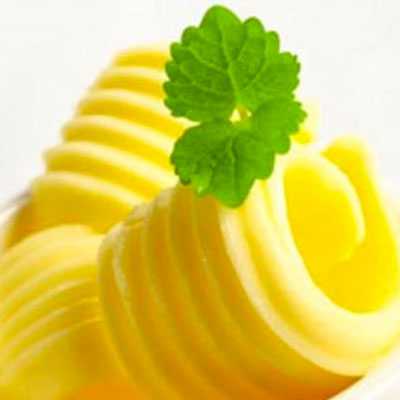Origins of The Lemon Poppy Seed Cake
The Lemon Poppy Seed Cake is a classic delight, merging the zesty, vibrant flavors of lemon with the subtle crunch of poppy seeds. This cake's origins trace back to Europe, where citrus-based desserts have long been favored for their refreshing taste and aromatic presence. Over time, the recipe has traversed continents, finding a cherished place in both casual and festive settings. It's particularly popular in the spring and summer months, but its sunny disposition makes it a welcomed treat any time of the year.
For those with dietary restrictions or preferences, this traditional cake has been adapted into vegan and gluten-free versions, ensuring everyone can enjoy its delightful flavor. A vegan lemon poppy seed cake substitutes eggs and dairy with plant-based ingredients such as almond milk, apple cider vinegar, and flaxseed, maintaining the cake's moist texture and rich flavor. Similarly, the gluten-free lemon poppy seed cake replaces wheat flour with almond flour or a gluten-free flour blend, making it a safe and delicious option for those with gluten sensitivities or celiac disease. These adaptations ensure that the joy of baking and the pleasure of indulging in this lemony treat can be shared by all, without compromising on taste or texture.
Moreover, the Lemon Poppy Seed Cake embodies the essence of home baking — it's a recipe that invites personalization and creativity. Whether you're baking a vegan version, a gluten-free adaptation, or sticking to the classic, the process is filled with the joy of mixing, the anticipation of baking, and the ultimate reward of tasting. This cake stands as a testament to the timeless appeal of lemon-flavored desserts and continues to be a favorite for its light, refreshing taste paired with the distinctive poppy seeds. By incorporating variations like the vegan lemon poppy seed cake or the gluten-free version, this beloved recipe warmly embraces the evolving dietary landscapes and preferences, ensuring its place in the hearts of dessert lovers everywhere.
Substitute of Lemon Poppy Seed Cake Ingredients
- Flour: For all-purpose flour, you can substitute with whole wheat flour, almond flour, or coconut flour, depending on the recipe and dietary needs. Note that ratios might change, as coconut and almond flours absorb more liquid than all-purpose flour.
- Sugar: Honey, maple syrup, agave nectar, or even artificial sweeteners can replace white sugar. The substitution ratios vary; for example, use ¾ cup of honey for every 1 cup of sugar, and adjust the liquid content in the recipe.
- Eggs: For baking, use applesauce, mashed bananas, flaxseeds, or chia seeds mixed with water as vegan substitutes. Typically, ¼ cup of unsweetened applesauce or one mashed banana replaces one egg.
- Butter: Unsweetened applesauce, mashed avocados, or vegetable oils can replace butter in recipes, especially in baking. For savory dishes, olive oil or coconut oil can be used.
- Milk: Almond milk, soy milk, oat milk, and rice milk are all good dairy-free alternatives. They can be used in a 1:1 ratio for cow's milk in most recipes.
- Cream: For heavy cream, full-fat coconut milk or a mixture of milk and butter (or milk and olive oil for a lighter version) can be used. Cashew cream is a vegan alternative.
- Buttermilk: Mix 1 cup of milk (dairy or non-dairy) with 1 tablespoon of lemon juice or white vinegar; let it sit for 10 minutes before using.
- Cheese: Nutritional yeast, cashew cheese, or other plant-based cheese substitutes can replace cheese in vegan recipes. For those not avoiding dairy but out of cheese, try mixing cream cheese with a bit of milk.
- Baking Powder: Mix ¼ teaspoon baking soda with ½ teaspoon cream of tartar to replace 1 teaspoon of baking powder.
- Chocolate: Carob chips or cocoa powder can replace chocolate in recipes, depending on the form the chocolate is supposed to be in.
Remember, when substituting ingredients, the taste, texture, and appearance of the final product may vary from the original recipe. It's always a good idea to start with small batches when trying new substitutes to ensure the result meets your expectations.
What To Serve with Lemon Poppy Seed Cake?
Lemon Poppy Seed Cake is a delightful dessert with bright citrus flavors and a delicate texture, making it a versatile treat that pairs well with a variety of accompaniments.
Here are some delicious recipes that you can serve with Lemon Poppy Seed Cake:
How To Store Lemon Poppy Seed Cake?
Storing Lemon Poppy Seed Cake properly is essential to maintain its freshness and flavor. Here are some tips to ensure your cake stays as delicious as the day you baked it:
Cool Completely: Before storing, allow the cake to cool completely on a wire rack. Storing the cake while it is still warm can lead to condensation, making it soggy.
Room Temperature Storage:
- For short-term storage (a few days), keep the cake in an airtight container or wrap it tightly in plastic wrap or aluminum foil.
- Place it in a cool, dry place away from direct sunlight or any heat sources.
Refrigerate:
- If the cake has a frosting or filling that requires refrigeration, or if you want to extend its freshness, store it in the refrigerator.
- Wrap it tightly in plastic wrap or aluminum foil, or place it in an airtight container to prevent it from absorbing odors from other foods.
- Before serving, you might want to let the cake come to room temperature for the best flavor and texture.
Freeze for Longer Storage:
- Lemon Poppy Seed Cake freezes well. Wrap individual slices or the entire cake tightly in plastic wrap, then again in aluminum foil or place it inside a heavy-duty freezer bag.
- Label the cake with the date, and it can be stored in the freezer for up to three months.
- Thaw overnight in the refrigerator or at room temperature for a few hours before serving.
Avoid Humidity and Heat: These can ruin the texture and flavor of the cake. If your kitchen is particularly warm or humid, opt for refrigeration over countertop storage.
Sliced Cake: If you have cut into the cake, press a piece of plastic wrap directly against the cut side of the cake to help keep it moist.















































